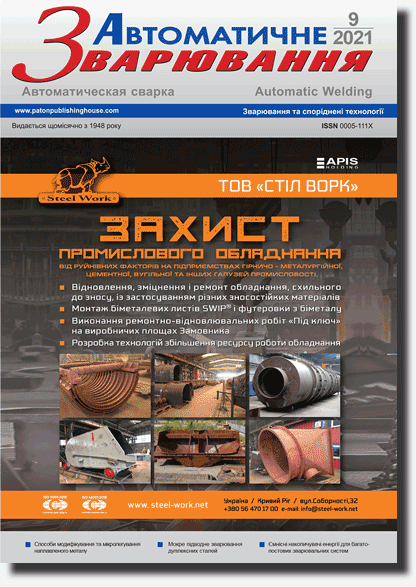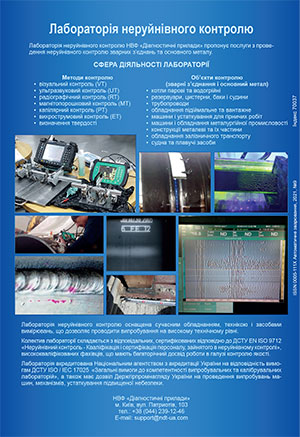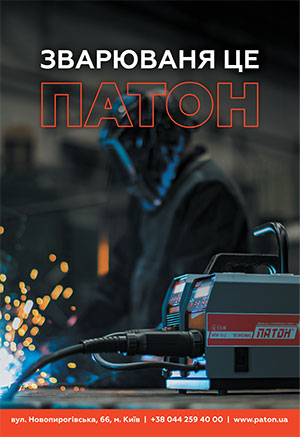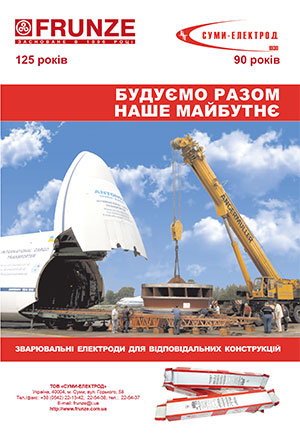| 2021 №09 (01) |
DOI of Article 10.37434/as2021.09.02 |
2021 №09 (03) |
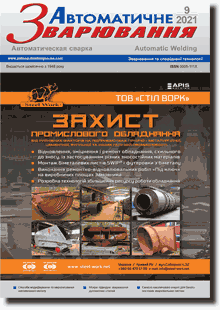
"Avtomatychne Zvaryuvannya" (Automatic Welding), #9, 2021, pp. 12-18
Problems of wet underwater welding of duplex steels
S.Yu. Maksymov, A.A. Radzievska, D.V. Vasyliev, G.V. Fadeeva
E.O. Paton Electric Welding Institute. 11 Kazymyr Malevych Str., 03150 Kyiv, Ukraine. E-mail: office@paton.kiev.ua
The article considers the problem of welding duplex steels: state-of-the-art of the problem and prospects for further development. Welds made in air and under water using coated electrodes, are characterized by a similar structure and properties. Intensive cooling provided by the water environment does not increase the content of ferrite in the weld and HAZ as compared to the content of ferrite in the joints made in the air. Butt joints produced under water at an unstable arc burning are characterized by a tendency to cold cracks formation in the weld metal, but in the HAZ cracks were not detected. in the article the analysis of hardness distribution in the investigated joints was presented, which did not reveal significant differences between the values determined in the welds made in air and in water. The size of austenitic phases in dry welding was larger than in wet welding under the same conditions of heat input. In wet welding, the share of γ-phase increased significantly with a growth in input energy from 27.31 to 39.46% for the weld center and from 35.01 to 44.9% for the weld metal adjacent to the fusion line. All investigated compositions of the chemical composition of the weld metal were insensitive to local corrosion due to high values of PREN. The weld metal adjacent to the fusion line showed optimal resistance to local corrosion, and the weld metal showed better resistance to local corrosion than the heat-affected-zone. 17 Ref., 1 Tabl., 8 Fig.
Keywords: duplex steels, underwater welding, welded joint, formation, structure, corrosion, service properties, welding materials
Received: 7.07.2021
References
1. Charles, J. (2007) Duplex stainless steels, a review after DSS`07 held in Grado. In Proceedings of the Duplex Stainless Steel Conference, Maastricht. The Netherlands, 18-20 June 2007.2. Labanowski, J. (2011) Dariusz Fydrych, Grzegorz Rogalski, Krzysztof Samson. Underwater Welding of Duplex Stainless Steel. Solid State Phenomena, 183, 101-106. https://doi.org/10.4028/www.scientific.net/SSP.183.101
3. Kacar, R. (2004) Effect of solidification mode and morphology of microstructure on the hydrogen content of duplex stainless steel weld metal. Mater. Design, 25(1), 1-9. https://doi.org/10.1016/S0261-3069(03)00169-9
4. Lage, M.A., Assis, K.S., Mattos, O.R. (2015) Hydrogen influence on fracture toughness of the weld metal in super duplex stainless steel (UNS S32750) welded with two different heat input. Int. J. Hydrogen Energ., 40(47), 17000-17008. https://doi.org/10.1016/j.ijhydene.2015.07.150
5. Farrell, J. (1996) Hyperbaric Welding of Duplex Stainless Steel Pipelines Offshore. Ph. D. Thesis. School of Industrial and Manufacturing Science. Cranfield University.
6. Karlsson, L. (1999) Intermetallic Phase Precipitation in Duplex Stainless Steels and Weld Metals Metallurgy, Influence on Properties and Welding Aspects. Weld. World, 43, 20-41.
7. Labanowski, J. (1997) Duplex steels - new material for chemical processing industry. Engineering and Chemical Equipment, 2, 3-10.
8. Muthupandi, V., Bala Srinivasan, P., Seshadri, S.K., Sundaresan S. (2003) Effect of weld metal chemistry and heat input on the structure and properties of duplex stainless steel welds. Materials Science and Engineering 358, 9-16. https://doi.org/10.1016/S0921-5093(03)00077-7
9. Shinozaki, K., Ke, L., North, T.H. (1992) Hydrogen cracking in duplex stainless steel weld metal. Welding J., 11, 387-396.
10. Prokop-Strzelczynska, K., Rogalski, G. (2016) Cold cracking susceptibility of joints made of ferritic austenitic duplex steel 2205 during underwater welding. Biuletyn Instytutu Spawalnictwa w Gliwicach. Nr 16, wydanie 2, 35-42. https://doi.org/10.17729/ebis.2016.2/4
11. Labanowski, J., Prokop-Strzelczynska, K., Rogalski, G., Fydrych, D. (2016) The effect of wet underwater welding on cold cracking susceptibility of duplex stainless steel. Advances in materials science, 16, 2, 68-77. https://doi.org/10.1515/adms-2016-0010
12. Kralj, S., Garasic I., Kozuh, Z. (2009) Underwater wet welding of duplex steel. Welding in the world, 53, 35-40.
13. Yu Hu, Yonghua SHI, Kun Sun, Xiaoqin Shen. (2019) Microstructure evolution and mechanical performance of underwater local dry welded DSS metals at various simulated water depths. Journal of Materials Processing Tech., 264, 366-376. https://doi.org/10.1016/j.jmatprotec.2018.09.023
14. Prokop-Strzelczyńska, K. (2016) Cold Cracking Susceptibility of Joints made of FerriticAustenitic Duplex Steel 2205 during Underwater Wet Welding. Biuletyn Instytutu Spawalnictwa w Gliwicach, 16, 2, 35-42. https://doi.org/10.17729/ebis.2016.2/4
15. Shi, Y., Hu, Y., Li, Z. et al. (2016) Research on porosity of underwater wet FCAW duplex stainless steel. China Welding, 25, 2, 27-33.
16. Shi, Y., Hu, Y., Yi, Y. et al. (2017) Porosity and Microstructure of Underwater Wet FCAW of Duplex Stainless Steel. Metallography, Microstructure, and Analysis, 6, 383-389. https://doi.org/10.1007/s13632-017-0376-3
17. Kun Sun, Min Zeng, Yonghua SHI et al. (2018) Microstructure and corrosion behavior of S32101 stainless steel underwater dry and wet welded joints.
Advertising in this issue:
The cost of subscription/purchase order journals or individual articles
| Journal/Currency | Annual Set | 1 issue printed |
1 issue |
one article |
| TPWJ/USD | 384 $ | 32 $ | 26 $ | 13 $ |
| TPWJ/EUR | 348 € | 29 € | 24 € | 12 € |
| TPWJ/UAH | 7200 UAH | 600 UAH | 600 UAH | 280 UAH |
| AS/UAH | 1800 UAH | 300 UAH | 300 UAH | 150 UAH |
| AS/USD | 192 $ | 32 $ | 26 $ | 13 $ |
| AS/EUR | 180 € | 30 € | 25 € | 12 € |
| SEM/UAH | 1200 UAH | 300 UAH | 300 UAH | 150 UAH |
| SEM/USD | 128 $ | 32 $ | 26 $ | 13 $ |
| SEM/EUR | 120 € | 30 € | 25 € | 12 € |
| TDNK/UAH | 1200 UAH | 300 UAH | 300 UAH | 150 UAH |
| TDNK/USD | 128 $ | 32 $ | 26 $ | 13 $ |
| TDNK/EUR | 120 € | 30 € | 25 € | 15 € |
AS = «Automatic Welding» - 6 issues per year;
TPWJ = «PATON WELDING JOURNAL» - 12 issues per year;
SEM = «Electrometallurgy Today» - 4 issues per year;
TDNK = «Technical Diagnostics and Non-Destructive Testing» - 4 issues per year.





